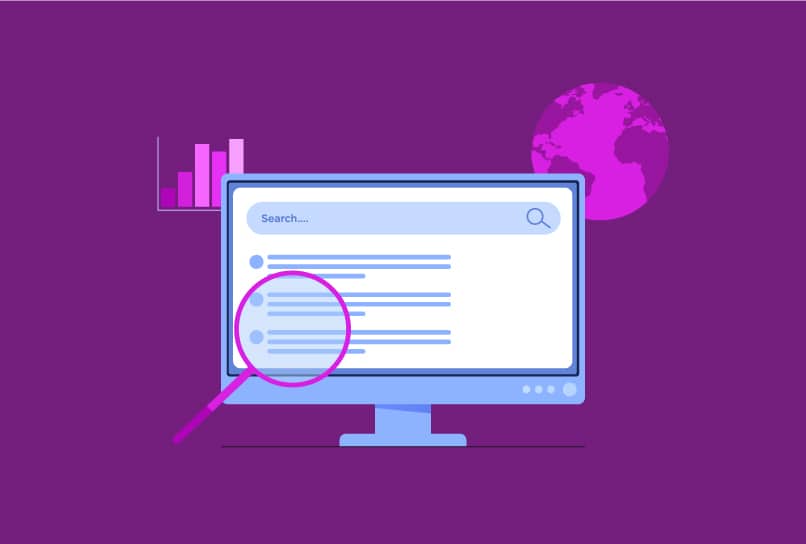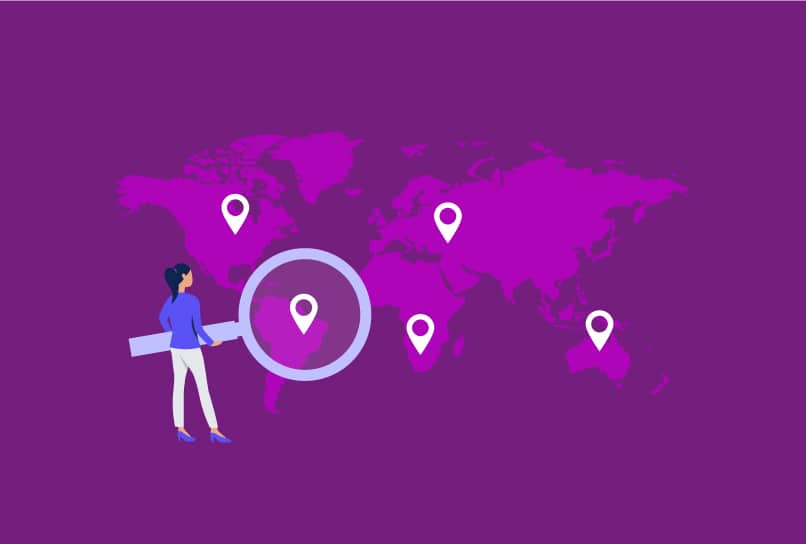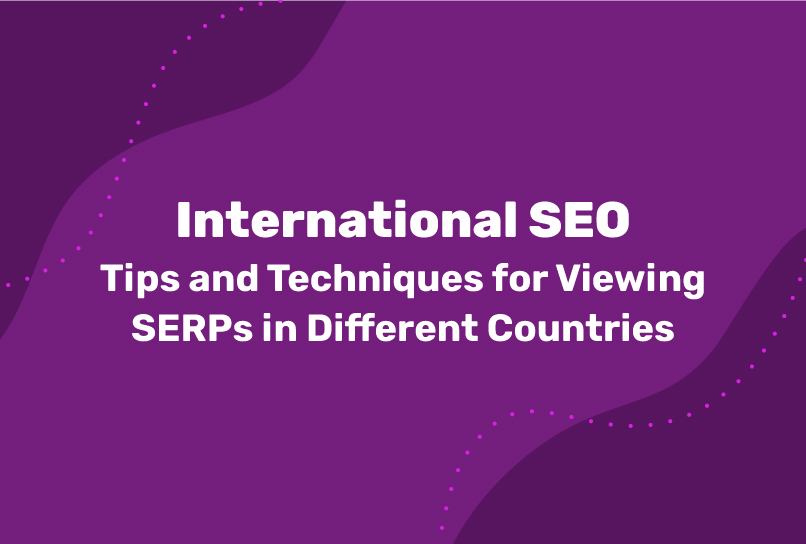If you own a website, you know how important it is to get your pages to appear on the first page of Google’s search results — the company that holds up to 85% of the search engine market share.
Ranking on Google’s SERPs internationally is no easy task, though. You can launch a website today for your business and have to wait for months before your content starts ranking anywhere near page one of Google SERPs worldwide.
Say your aim is to attract customers from across the globe, including countries with a different language from your webpage content, then it’s time for you to consider international SEO techniques.
International SEO isn’t as alien or complex as you might think and could be just what you need to make the best of this new audience category. Let’s take a look.
What is International SEO?
International SEO (Search Engine Optimization) is the practice of optimizing your website, targeting different languages and regions, such that search engines like Google or Bing can easily identify your target countries and preferred business language.
Here’s how it works. Okay, so you know how you can search for products on Google, right? Well, now the product is your website, and you want it to show up when people from different countries, speaking different languages, search for things related to your business. That’s International SEO.
It’s you giving your website a passport and teaching it how to say “hello” in 20 languages, so search engines can hook it up with the right people, anywhere.
Importance of international SEO for businesses with global reach
Small businesses and big companies have much to gain from international SEO practices.
If your business has a significant global reach, it’s essential to understand international SEO, as it will increase your brand exposure to the wider global market. With increased exposure, more people will see your list of services and products, which you can use to your advantage to boost sales and conversions.
Business-wise, international SEO can give you a competitive advantage in your niche. The chances are that your competitors aren’t using international SEO the right way. Thus, you can optimize your content for a different language or country and gain an edge over your competitors.
In summary, International SEO is important for expanding your customer base and bringing your brand to the attention of your global audience. It’s like taking your brand on a global tour without ever leaving your computer chair. As they say, who needs a private jet when you’ve got International SEO, right? 🙂
Challenges associated with international SEO: Language barriers, cultural differences, and varying engine algorithms
As you’d expect, International SEO comes with its unique challenges.
Language barriers
How do you get your content across to people in different countries and languages?
The difference between a language and country-targeted strategy is that with the latter, you target the local audience of that country, while with the former, you’ll have to reach a global audience that speaks the language.
For instance, if the keyword you’re targeting is a localized version of “cat food” for the UK, all your SEO strategies will be optimized to take advantage of the UK-based audience.
On the other hand, a language-based approach for “comida de gato” will consider all Spanish-speaking countries like Paraguay, Spain, Costa Rica, Venezuela, and Argentina.
Cultural differences
Many business leads begin with a search engine query, and multiple languages that use varying localized dialects are required to establish a connection with the internet.
One of the challenges of international SEO in this context is that most business owners fail to consider the cultural context when they attempt to create global connections.
When the approach is language-targeted, it’s important to understand your foreign audience’s search behavior, going beyond mere Google translations and delving deep into cultural context and semantics to create an SEO technique to drive global lead generation.
Varying engine algorithm
Although Google’s search engine is by far the most used, it’s also important to consider how a keyword query will reflect in other search engines like Bing and Baidu with different algorithms.
With SEO, the idea is to match user intent. Whatever search engine is involved, the goal is to provide users with results that best answer their questions.
As a business owner, you must consider how various search engines interpret your content and how to make the best of them to deliver top content and broaden your global reach.
Understanding the differences in SERPs
SERPs stands for Search Engine Results Page. It’s basically the list of results you get when you enter and load a query onto a search engine. As you may have noticed, the results on the SERPs often differ in their order or ranking, depending on the semantic context of the query. More importantly, the search results vary based on location.
How do SERPs differ across different countries and regions
If you’ve ever queried a term on a search engine from two different regions or countries, you’ll have noticed that the results and rankings in the SERP differed.
This is because each world region has its own ccTLD (country-code top-level domain). For instance, Google.com can also be Google.es (Spanish) or Google.fr (French). Each domain has its own algorithm and exists in the context of its own economy of publishers.
This means that if your website is based on a Google.com domain, it may not have a different level of brand exposure on a Google.es domain.
As such, when your audience queries Google from other locations or regions worldwide, you may not rank as highly for certain keywords as you already do on your local Google domain.
Factors that influence search engine ranking in different countries
As we’ve clearly seen in the previous section, SERPs aren’t necessarily the same, and nor do the results necessarily appear in the same order across different locations. Here are some factors influencing this disparity:
Language and location
A region’s local nuances and language have a big role in how you rank on search engines within the area.
When your webpage content is translated into a different language, it might lose some context, which is likely enough to lose rankings and valuable traffic from another location.
User behavior
Another reason why SERPs vary from place to place is differences in user behavior, specifically search intent. A term might have a totally different intent in another country, meaning that the SERP returning the query might be completely different in one country from how it is in another.
Why is it important to view SERPs from the perspective of the target audience?
SEO and SERPs differ and extend globally. As a business owner seeking to expand a brand or services to a global audience, it’s important to view SERPs from the perspective of your target audience.
To grow and engage an international audience, you must note that people in other locations will query different keywords in various languages. This realization should propel you to make your SEO strategy and keyword research differ in each region.
So, viewing SERPs from your target audience’s perspective is essential. It helps you better understand the cultural nuances that go into their keyword searches and search engine queries and how you can subsequently use the knowledge to optimize your own content.
Techniques for Viewing SERPs in Different Countries

Although SERPs are localized, there’s no need to travel all the way to another country just to compare the SERP for a query or keyword. Luckily, there are other ways to do this. This section will discuss the various methods you can use to view SERPs in various countries.
VPNs and Proxy Servers
VPN stands for Virtual Private Network and can change your device’s IP address. An IP address can be linked to your house address and number that identifies your residence within a location.
For instance, an address of no. 54, Little Wonder Street, New Haven, Manchester, denotes a house on a certain street within a certain city. As we all know, Manchester is in the UK. In other words, the address identifies a certain resident of the UK.
IP addresses work similarly, identifying your device among all the millions or billions of other devices on the internet based on a relative physical location.
Internet-based platforms like websites and search engines like Google identify your location through your IP address. As such, every time you enter a query into Google’s search engine, Google generates a SERP that’s optimized for your precise location. If you scroll to the bottom of the page, you’ll see your location and often your immediate city. That’s how precise the system is.
So, it stands to reason that a fine way to check SERPs from foreign regions is to alter your IP address. That is, you’ll change where the system identifies your location to be.
You can do this either via a VPN solution or a proxy server.
When you use a VPN tool, all your website traffic is rerouted through a different server, effectively changing your IP address. VPN tools usually have servers located across the globe. So, if you want to view the SERP for Greece, you can simply use a VPN app with server locations within Greece.
A proxy server performs the same function but in a slightly different way. It acts as a relay between you and the server, effectively masking your web activity in the cloak of a “proxy.”
Both proxy servers and VPNs are efficient tools for viewing SERPs in different countries.
Google Ads Preview and Diagnosis Tool
The Google Ads Preview and Diagnosis tool was intended for Google Ads users and advertisers to see if their ads came up in Google without accruing genuine impressions.
However, the tool is an invaluable way to test organic results pages and asses how they’re affected by device type and, more importantly, location.
With the tool, you can search for a term your website ranks highly on and see the websites that perform well on the SERP. You can then change the location to see how it affects the SERP in various countries.
Note: For international SEO, Google Ads diagnostic tool is more of a hack than a substitute for comprehensive SEO analysis. The tool provides very limited data on search rankings, as well as backlinks, page speed, web vitals, and domain authority, among other SEO metrics.
Third-party tools like SEMRush, Ahrefs, and Moz
Third-party SEO tools like Ahrefs, SEMRush, and Moz provide all-in-one SEO tools for website owners. In addition to URL audits and other services, these third-party tools provide international SEO solutions that allow users to check keyword SERPs from various locations.
However, reliable Third-party SEO tools come at a hefty fee and are arguably not the best option for individuals and small-scale businesses. And although their data are indicative of the true picture, these tools rely on third-party data, which may not always be accurate or up-to-date. This can lead to incorrect conclusions.
Best Practices for International SEO

Regular SEO has specific techniques, and so does international SEO. If you want to optimize your webpage content such that it ranks highly on SERPs across different regions and in different locations, here are some crucial practices to implement in your SEO strategy:
Create localized content for different countries and regions
Your old content is still valid, so this doesn’t mean you should rip everything up and start from scratch. However, one of the best international SEO practices is to create localized content for various regions and countries.
Alternatively, you can optimize your existing content to benefit international audiences. By keeping track of your local and international audience, you can easily identify what they consider quality content.
Tools like Google Trends are excellent for seeing what your international audience finds interesting, and you can adjust your content strategy to reflect this.
You should also compare your content with that of your competitors to see how you fare against them regarding international reach.
Optimizing website structure and metadata for international audiences
Another key international SEO practice is to optimize your website’s layout and metadata for global audiences. Whatever content you create or website design that you use, remember that more than 80% of internet traffic is generated by mobile devices.
As such, you should ensure your web pages are optimized for mobile viewing. Additionally, pay attention to hreflangs to allow Google to identify the URL the visitor sees based on their geographic location and language.
Conduct keyword research for each target country
Carry out keyword research across different locations using any of the abovementioned tools and assess user intent, keyword relevance, and traffic.
Each of the world’s regions has its own language structure, semantics, vocabulary, and information needs. As such, your local content may not be relevant to your international audience without international SEO.
And keyword research is a great way to identify the needs of your global audience and translate them into your content strategy.
Build backlinks from local websites and directories
This is similar to regular SEO backlinking. The only difference here is that you’ll do this in collaboration with directories and websites in the location of your foreign target audience.
Use social media platforms popular in each country
Another way to generate organic leads internationally is to promote your content on social media platforms popular with your target audience. For instance, you can leverage WeChat for your Chinese audience and WhatsApp for your Nigerian audience.
How Incogniton Can Help With International SEO
Incogniton is an anti-detect or stealth browser that allows users to browse the internet securely and anonymously. While Incogniton is primarily a tool for website anonymity, it has several rich features that make it ideal for practicing international SEO.
Social media marketers and digital advertisers have a lot to gain from using Incogniton, as its ability to switch your device’s IP without third-party detection seamlessly is truly awesome — and is way easier for multiple browser profiles (and fingerprints), or even languages, compared to using a VPN.
Here are some of Incogniton’s key features and how they’re useful for international SEO:
Fingerprinting
With its fingerprinting technology, Incogniton generates a virtual proxy internet ID for users, which is excellent for switching locations to carry out international keyword research. As such, Incogniton is useful for viewing international SERPs for in-depth competitor research.
Cookies management
Cookies are another thing that can give you away when carrying out competitor research in other locations. Incogniton’s cookie management feature allows you to separate cookies from your browsing profile, including importing and exporting them as you see fit.
This way, you can better analyze your competitors and gain an advantage in your SEO strategy.
Team accounts
Keyword research for big businesses looking to expand globally isn’t a one-person task. In addition to managing multiple browser profiles, Incogniton features team profiles that let you optimize keyword research workflows within your SEO teams for maximum productivity.
This way, you can assign tasks to various team members and have them carry out international SEO techniques simultaneously across different locations and collaborate effectively.
Conclusion
International SEO requires a good understanding of your global audience, how keywords work in the context of language semantics, and most importantly, access to the SERPs in different countries. Without the latter, it’s impossible to determine where you stand on a region-to-region basis.
And so far, this article has extensively broken down the required techniques and tools for viewing SERPs from different countries, including VPNs and Proxies, Google Ads tools, and numerous third-party platforms.
Even more, we introduced Incogniton, an anti-detect browser that does the heavy lifting for you under the hood. Its fingerprinting tech lets you switch locations for in-depth competitor research, its cookie management feature separates cookies from browsing profiles for better analysis, and the Team profiles facilitate collaboration.
There you have it. A proper International SEO strategy is non-negotiable if you truly want to expand your brand’s reach globally, and Incogniton is just the right software to get you started.
Anti-Detect Browser for Multi-Account Management
Manage unlimited virtual profiles for easy multi-account management. Safe and anonymous. Ideal for teams and individuals. Download and try for free now!


Comments are closed.